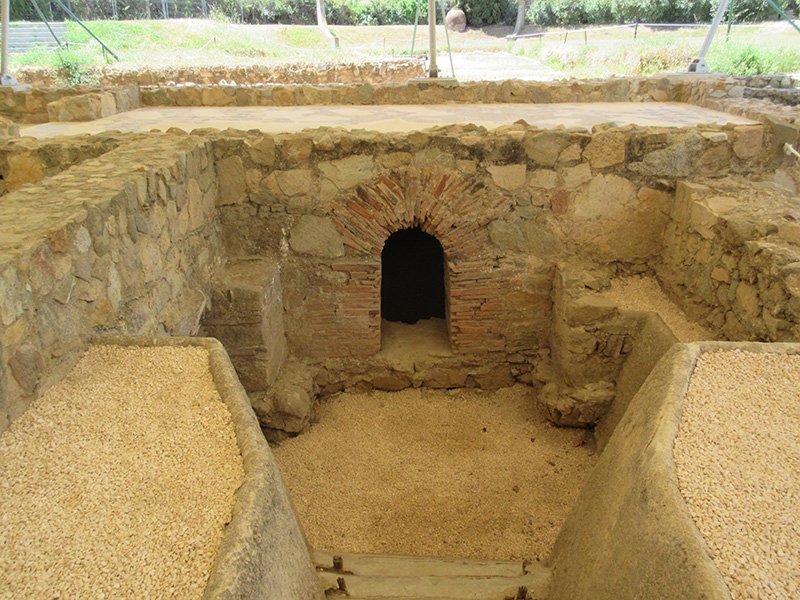
Carrer de Castaños, 175
The origin of today’s Mataró is the Roman city of Iluro, built in the first half of the first century BC. Also from this period are the oldest remains of the Clos Arqueològic de Torre Llauder, the city’s most important archaeological site.
Located in the Pla d’en Boet district, this site houses the remains of a Roman villa. But before, in the same place, there had been a wine cellar; a rural establishment where the vines were cultivated and wine and amphorae were made. Wine from this area was exported to Rome, Pompeii, Gaul and even North Africa.
When wine production was no longer profitable, on the same plot of land they built a villa. From its characteristics we can say that it was the residence of a rich proprietor, his family and slaves.
From the structures found, the residential area of the villa was organised around a vestibule or atrium, highlighted by an ornamental basin or impluvium. The purpose of this space was to distribute visitors to the noble bedrooms and rooms, all decorated with multicolour mosaics and wall paintings. The garden was surrounded by a porch or peristyle, which was also paved with rich mosaics.
The bathing area was divided into four spaces: the changing room or apodyterium, the frigidarium or cold-water baths, the warm water baths or tepidarium, and the hot baths or caldarium where we can see the underground heating system. At one end of the service area we can also see the collective toilets with a wash basin.
The earliest references to this archaeological site are from the 17th century, but the earliest excavations date from 1961. It opened in 1980 and now belongs to Mataró City Council.









